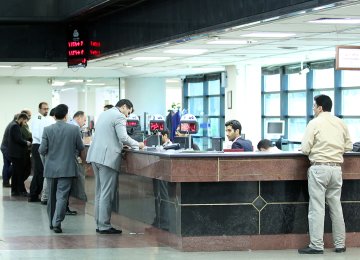As Tehran’s air pollution is getting worse every year, authorities are scrambling to find solutions.
The phenomenon is exacerbated in winter, as cold weather prevents air circulation within the lower atmosphere.
One such remedy is to reduce the number of cars commuting between the capital city and its outskirts. To this end, the government has put development of suburban trains on top of its agenda.
Tehran’s kindergartens and elementary schools were closed on Monday and Tuesday, as a huge blanket of smog shrouded the city, sounding the alarm that the phenomena has hit the capital city earlier and stronger than before.
The level of the deadliest PM2.5 particles reached 156 on Monday—more than three times the level considered safe by the World Health Organization—in what health authorities called the worst air pollution this year.
To control the issue from worsening, authorities often turn to temporary measures such as shutting down a few factories around Tehran and expanding Congestion Charge Zone–a designated area in downtown Tehran where most motor vehicles are made to pay for transportation. These measures, however, have proved to be ineffective in the long run.
A considerable share of the pollution is caused by motor vehicles plying from suburban areas to major cities every day. Cars are popular means of transportation amid lack of infrastructures for effective and less pollutant modes such as railroads.
This is one of the reasons why the government has been pressing to expand suburban trains in big cities across Iran.
“Development of high-speed suburban trains will help resolve many traffic related problems in Iran’s big cities,” says Minister of Roads and Urban Development Abbas Akhoundi.
He refers to the development of suburban trains connecting the populous suburban city of Varamin to Tehran as one of the most important projects, “which will divert part of the traffic from road to rail”.
Akhoundi had earlier said that as many as 450,000 automobiles drive to Tehran every day, which increase the risk of accidents, traffic congestion and pollution.
“How can we control suburbanization in big cities without using rails?” he said.
Need for Major Overhaul
According to the minister, transportation systems between cities and their suburbs need a “major overhaul” so that passengers can be transported from suburban areas directly to the central parts of the cities.
According to CEO of Islamic Republic of Iran Railways Mohsen Pourseyyed-Aqaei, about 4.5 million passengers used suburban rail services in the last Iranian year (March 2015-16), up from two million the year before.
Pourseyyed-Aqaei said plans are underway so that seven million people can use suburban trains as of the next Iranian year (starts March 2017), stressing that all major cities will be equipped with suburban trains.”
The IRIR is also planning to lay 700 kilometers of suburban railroads. “The cities of Tehran and Ahvaz are top priorities for the development of suburban railroads,” he said.
Iran’s railroads currently transport about 25 million passengers annually.
As per the 20-Year National Vision Plan (2005-25), the IRIR plans to increase the number of passengers using railroads to 65 million per year: 20 million passengers via suburban trains and 45 million though inter-city trains.
Plans to develop suburban railroads are expected to speed up in the absence of economic sanctions that were lifted in January as part of the nuclear deal signed between Tehran and world powers last year.
IRIR is in talks with many international companies to finance and implement its projects.
Earlier this year, a delegation of experts from Germany’s Siemens paid a visit to suburban railroads around Tehran. Siemens and IRIR have recently agreed to cooperate in the sector.
The design of suburban railroads and connecting them with the urban transportation system are parts of a contract signed between IRIR and the French designing company AREP.
As part of this contract, the French company, which is a multidisciplinary consultancy and a subsidiary of France’s state-owned railroad company SNCF, has agreed to carry out redesign, redevelopment and expansion of railroad stations in Tehran, Qom and Mashhad.
The contract focuses on four basic approaches, namely development of multimodal stations, development of public transport system, design of high-speed train stations and design of suburban railroads.
According to Pourseyyed-Aqaei, AREP’s development projects in Iran are aimed at promoting easy access between urban and suburban areas and integrating the country’s fragmented transportation system.














Add new comment
Read our comment policy before posting your viewpoints